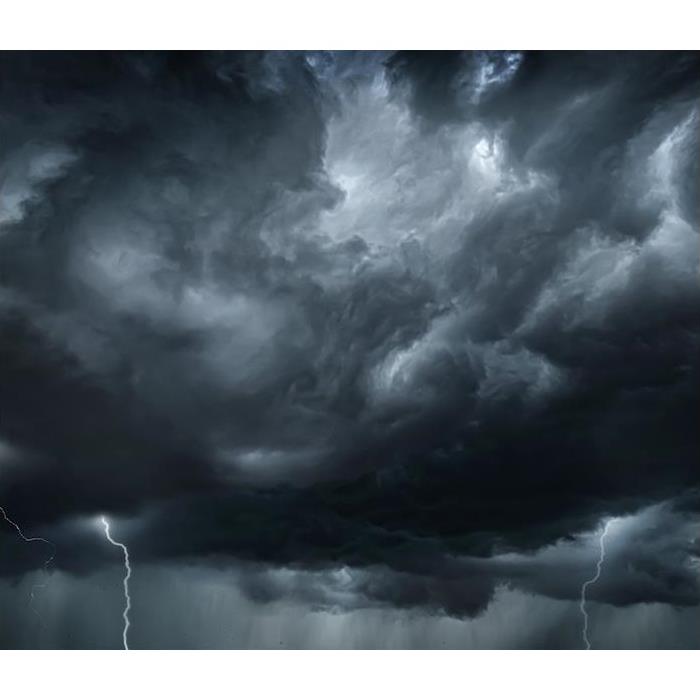Recent Posts
Keeping Promises
2/6/2023 (Permalink)
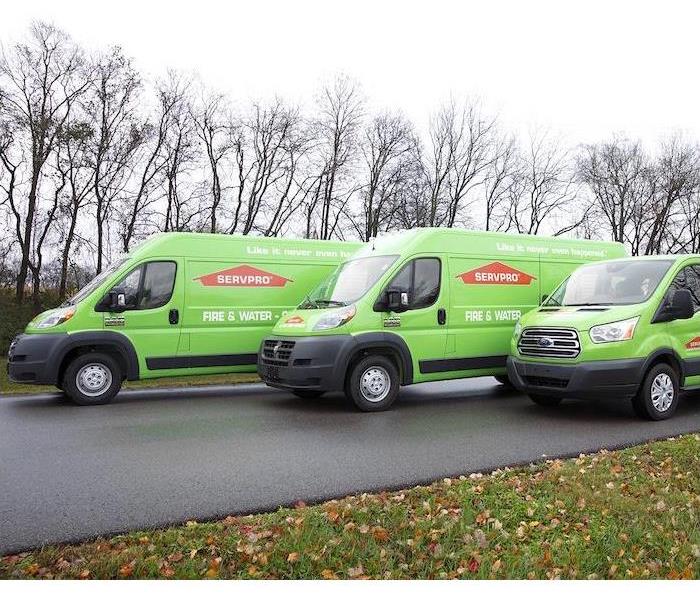 Promises kept`
Promises kept`
As we enter our 40th year as a SERVPRO franchise, I think to myself about the promise that we make to each and every customer.
We tell every customer that we are going to our level best to exceed every expectation that they have for our services.
The most important promise that I give is one that the head of State Farm Premium Service Program taught me many years ago....
Communicate, communicate, communicate!
Every project, be it water, fire, mold, etc. has it's bumps, changes, unforeseen developments and pivots.
What is crucial is constant contact and updates to the customer. Even when it may be a not so fun thing to relay. We know that talking with the client and explaining a "bump", the customer is reassured in our professionalism by our communication.
Building trust and repeat calls is built on Communication and Keeping the Promise!
3 Main Threats That Storms Bring | SERVPRO® of Tallahassee
8/22/2022 (Permalink)
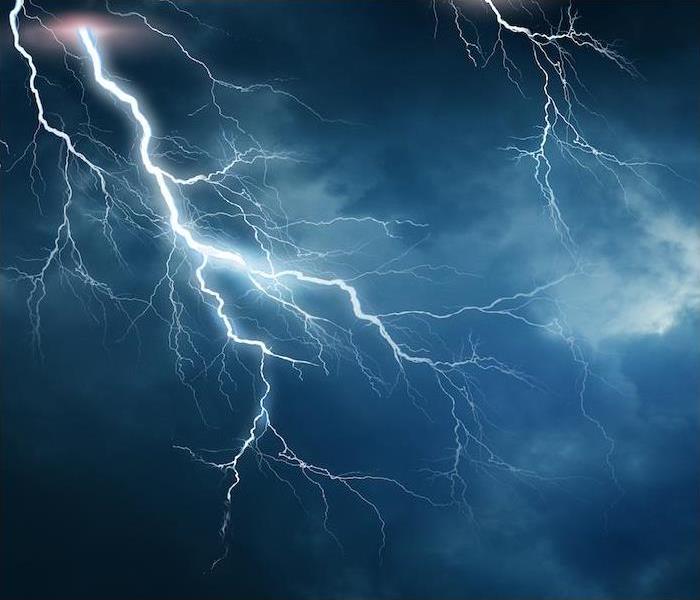 Storm Warnings
Storm Warnings
Severe storms can be devastating to homeowners. Even though modern homes are built to withstand more extreme weather nowadays, almost every home or property will succumb to damages at some point when a storm rolls into town.
Depending on what kind of storm or event occurs, your home may be at risk of different levels of damage. A lot comes into play when considering your personal risk level. From the landscape around your home to the quality of materials with which your house was built, each factor is important.
In Florida, we are at risk of severe thunderstorms, tornadoes and torrential rains. By knowing what kinds of weather could affect us here, it can help you be more prepared for what could come.
If you do suffer damages to your home, be cautious about staying inside your house while repairs are being done. Sometimes damages are easily visible, but other times they can be hard to see but are causing structural issues.
The three main threats from storm are wind, water and impact damages:
Wind
Wind can cause massive destruction in a short amount of time. Wind produced by tornadoes and hurricanes are the most common sources of damaging winds, but even the strongest of thunderstorms can cause winds of up to 100 mph.
Wind can toss debris around your property and cause damage to your vehicles and home. It is best to always stay inside and away from windows when a storm is in our area. If you have time ahead of any storm, tie down any untethered furniture and clear away any tree limbs or branches.
Water
Damage from water happens often during and after storms. Downpours can cause issues inside your home if the seals around your windows and doors aren’t waterproof, and if water seeps into your foundation, it can cause structural issues.
Consider landscaping and grading your property to help route water away from your foundation. You can also build a rain garden, which is an aesthetically pleasing way to prevent water from pooling near your home.
Paying special attention to your gutters should also make the top of your storm preparation list! Keeping them clear and unclogging blockages helps prevent water from pooling on your roof and eventually making its way into your attic and walls.
Impact
Impact damage from falling trees or flying debris can cause some of the most widespread damage the fastest. The best way to attempt to avoid these damages is by keeping your property tidy and taking down any dead limbs or trees often.
Weather-related disasters are costly. In 2021 alone, over $145 billion of damages occurred in the United States. By incorporating some of these tips, you can help save yourself time and money by keeping your household safer and more secure.
When you are faced with storm damages, call us at SERVPRO of Tallahassee immediately. Our quick and thorough response will ensure that your restoration is done properly.
When you suffer storm-related damage to your home or business, it’s important that you know who to call! Contact us today to get your storm damage restoration started faster.
3 Main Threats That Storms Bring | SERVPRO® of Tallahassee
8/22/2022 (Permalink)
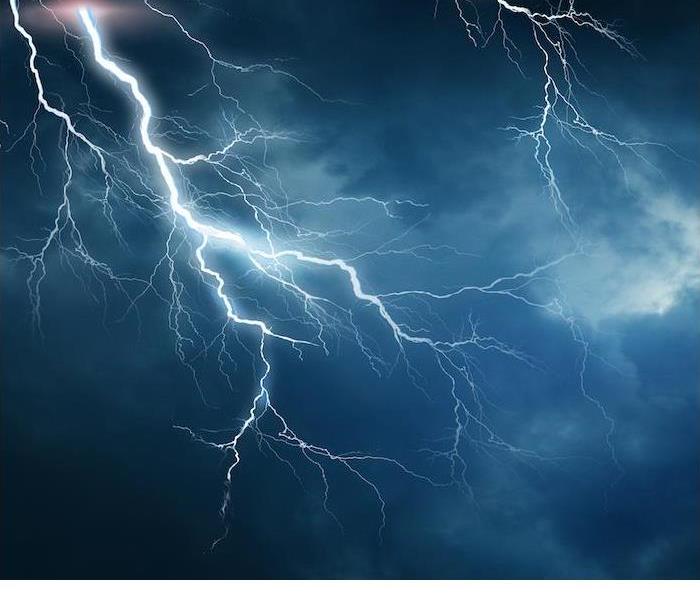 Storm Warnings
Storm Warnings
Severe storms can be devastating to homeowners. Even though modern homes are built to withstand more extreme weather nowadays, almost every home or property will succumb to damages at some point when a storm rolls into town.
Depending on what kind of storm or event occurs, your home may be at risk of different levels of damage. A lot comes into play when considering your personal risk level. From the landscape around your home to the quality of materials with which your house was built, each factor is important.
In Florida, we are at risk of severe thunderstorms, tornadoes and torrential rains. By knowing what kinds of weather could affect us here, it can help you be more prepared for what could come.
If you do suffer damages to your home, be cautious about staying inside your house while repairs are being done. Sometimes damages are easily visible, but other times they can be hard to see but are causing structural issues.
The three main threats from storm are wind, water and impact damages:
Wind
Wind can cause massive destruction in a short amount of time. Wind produced by tornadoes and hurricanes are the most common sources of damaging winds, but even the strongest of thunderstorms can cause winds of up to 100 mph.
Wind can toss debris around your property and cause damage to your vehicles and home. It is best to always stay inside and away from windows when a storm is in our area. If you have time ahead of any storm, tie down any untethered furniture and clear away any tree limbs or branches.
Water
Damage from water happens often during and after storms. Downpours can cause issues inside your home if the seals around your windows and doors aren’t waterproof, and if water seeps into your foundation, it can cause structural issues.
Consider landscaping and grading your property to help route water away from your foundation. You can also build a rain garden, which is an aesthetically pleasing way to prevent water from pooling near your home.
Paying special attention to your gutters should also make the top of your storm preparation list! Keeping them clear and unclogging blockages helps prevent water from pooling on your roof and eventually making its way into your attic and walls.
Impact
Impact damage from falling trees or flying debris can cause some of the most widespread damage the fastest. The best way to attempt to avoid these damages is by keeping your property tidy and taking down any dead limbs or trees often.
Weather-related disasters are costly. In 2021 alone, over $145 billion of damages occurred in the United States. By incorporating some of these tips, you can help save yourself time and money by keeping your household safer and more secure.
When you are faced with storm damages, call us at SERVPRO of Tallahassee immediately. Our quick and thorough response will ensure that your restoration is done properly.
When you suffer storm-related damage to your home or business, it’s important that you know who to call! Contact us today to get your storm damage restoration started faster.
3 Main Threats That Storms Bring | SERVPRO® of Tallahassee
8/22/2022 (Permalink)
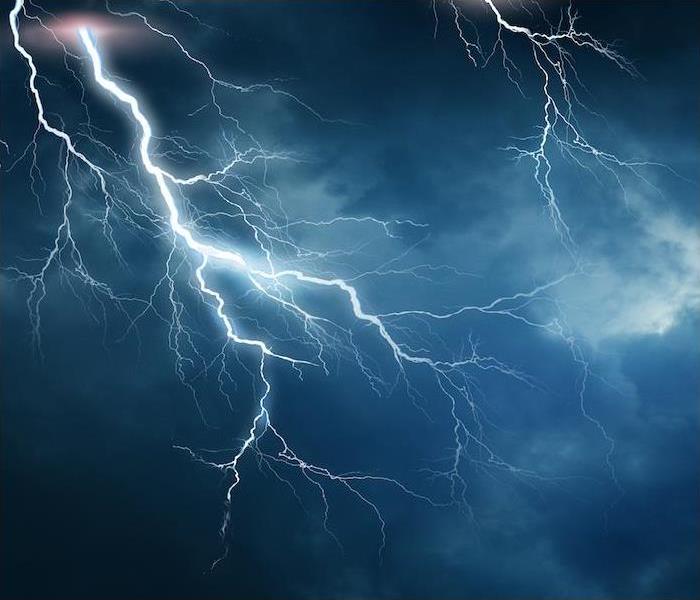 Storm Warnings
Storm Warnings
Severe storms can be devastating to homeowners. Even though modern homes are built to withstand more extreme weather nowadays, almost every home or property will succumb to damages at some point when a storm rolls into town.
Depending on what kind of storm or event occurs, your home may be at risk of different levels of damage. A lot comes into play when considering your personal risk level. From the landscape around your home to the quality of materials with which your house was built, each factor is important.
In Florida, we are at risk of severe thunderstorms, tornadoes and torrential rains. By knowing what kinds of weather could affect us here, it can help you be more prepared for what could come.
If you do suffer damages to your home, be cautious about staying inside your house while repairs are being done. Sometimes damages are easily visible, but other times they can be hard to see but are causing structural issues.
The three main threats from storm are wind, water and impact damages:
Wind
Wind can cause massive destruction in a short amount of time. Wind produced by tornadoes and hurricanes are the most common sources of damaging winds, but even the strongest of thunderstorms can cause winds of up to 100 mph.
Wind can toss debris around your property and cause damage to your vehicles and home. It is best to always stay inside and away from windows when a storm is in our area. If you have time ahead of any storm, tie down any untethered furniture and clear away any tree limbs or branches.
Water
Damage from water happens often during and after storms. Downpours can cause issues inside your home if the seals around your windows and doors aren’t waterproof, and if water seeps into your foundation, it can cause structural issues.
Consider landscaping and grading your property to help route water away from your foundation. You can also build a rain garden, which is an aesthetically pleasing way to prevent water from pooling near your home.
Paying special attention to your gutters should also make the top of your storm preparation list! Keeping them clear and unclogging blockages helps prevent water from pooling on your roof and eventually making its way into your attic and walls.
Impact
Impact damage from falling trees or flying debris can cause some of the most widespread damage the fastest. The best way to attempt to avoid these damages is by keeping your property tidy and taking down any dead limbs or trees often.
Weather-related disasters are costly. In 2021 alone, over $145 billion of damages occurred in the United States. By incorporating some of these tips, you can help save yourself time and money by keeping your household safer and more secure.
When you are faced with storm damages, call us at SERVPRO of Tallahassee immediately. Our quick and thorough response will ensure that your restoration is done properly.
When you suffer storm-related damage to your home or business, it’s important that you know who to call! Contact us today to get your storm damage restoration started faster.
SERVPRO Is the Restoration Team for You | SERVPRO® of Tallahassee
8/4/2022 (Permalink)
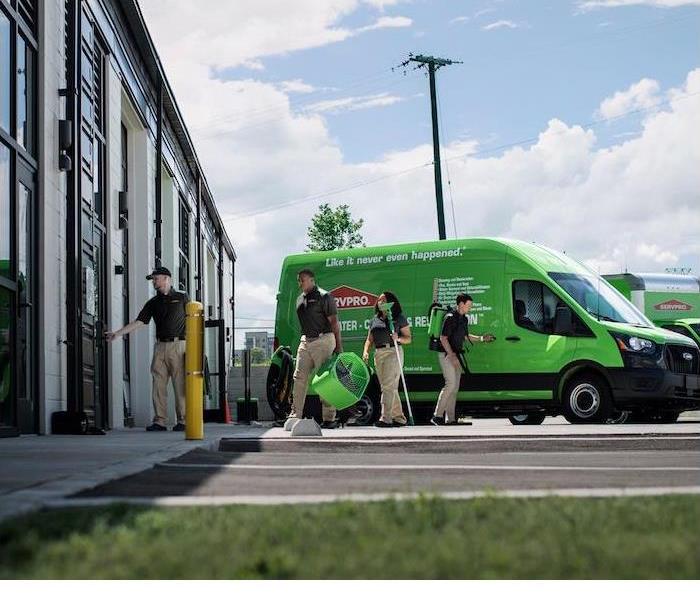 SERVPRO of Tallahassee, the Best in Tallahassee
SERVPRO of Tallahassee, the Best in Tallahassee
Here at SERVPRO of Tallahassee, we are an independently owned and operated location, so we fully understand what it takes to run a successful business. In addition to tackling the daily challenges of a business, you also have to worry about how to handle any sort of natural disaster situation if one were to come our way.
We all know that we can’t control the weather or prevent natural disasters, but we can still be prepared for them.
In addition to suffering damages to your beloved business, you can also end up sustaining damages to your home. Recovering from a disaster can be hard enough without having to deal with two locations!
Preparing your household for any sort of threat by creating an emergency plan helps keep your whole family involved in the process.
The American Red Cross operates an amazing website that collects data and resources from around the country to help offer suggestions on how to prepare for natural disasters. In addition to the ARC, the Tallahassee Division of Emergency Management has a fun website that breaks down the various threats we face and how to prepare for them.
Whether you run a business in the Tallahassee area or own a home here, you will likely experience some degree of damage at some point. In each case, quick action is required to ensure there are no lasting damages.
Why Choose Your SERVPRO Team?Each situation is unique, and we fully understand that. Every restoration project comes with its own unique intricacies, and we know that each situation needs to be treated as such.
For example, more than 14 million homes are in a zone that is at risk of annual flooding, but the damages from any flooding varies greatly. We know how to handle damages of every size and scope, so you can rest assured that we will take care of you, no matter what your situation is.
We are available whenever you need us. We are here to answer your call 24 hours a day, seven days a week. When it comes to damage restoration, quick action is crucial to prevent long-term or irreversible damages.
For example, if water damages your home from a flood or faulty appliance, it can cause irreparable damages to your furniture and other fragile items. If it is left untreated for a long period of time, mold and mildew can take hold and make a small problem and turn it into a structural safety issue.
We are more than just damage restoration. We are here to help you recover from any damages you incur, and that includes other aspects of restoration in addition to damage repair.
We will actually help you pack up your things while the restoration is occurring, and we can work alongside your insurance agent to make the most out of your claims process. We will provide assistance in every possible way in our attempt to make the process easier or you.
It doesn’t matter what kind of disaster you are facing, your local team at SERVPRO of Tallahassee has your back. Our highly knowledgeable team of professionals will start the cleanup process quickly and get your property or home back to preloss condition before you know it.
When you suffer damage to your home or business, it’s important that you know who to call! Contact us today to get restoration started faster.
Flames, Fun & Fire Safety
7/19/2022 (Permalink)
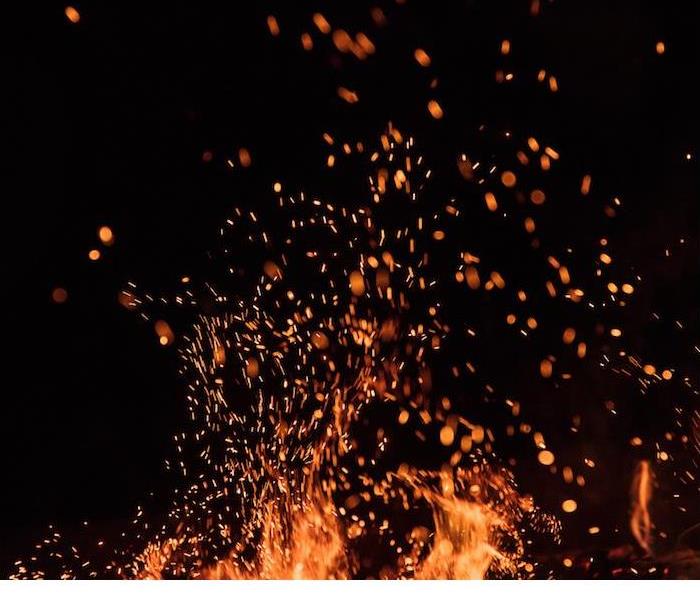 Summertime hazards
Summertime hazards
We are so busy nowadays, so when we have the opportunity to slow down and enjoy the benefits of the summer season, we jump on it! Family barbecues, s’mores and late-night bonfires are all staple activities to enjoy this season.
In order to create these fun times and memories, use of fire is required. From bonfires to grilled meals, it is important to practice good fire safety.
While we are doing our best, the risk of sparking a wildfire is always there. In fact, the National Park Service states that 85% of wildfires are started by humans.
Understanding the different risks that fire brings should only make you aware of the risks, not prevent you from firing up your grill for your latest fresh fish purchase or enjoying your portable fire pit. These simple measures below will ensure you are burning responsibly every time so you can continue to enjoy what you love most.
Fun and FireGrills, campfires and fireworks are disproportionately responsible for the start of home fires. When a fire breaks out due one of those reasons, it is typically due to user error.
Always have a responsible person tending to the flames and never leave a smoldering fire pit unattended. Even embers and sparks are enough to start a fire.
If you enjoy bonfires as a family, build them with approved wood only and light them with matches or lighters. Gas and other chemicals should never be an option when starting a fire.
Portable fire pits are also another popular way to enjoy a bonfire. If you own one of these pits, place it on a level and sturdy surface only and avoid overhangs and garages.
Approved firewood should be the only thing you burn once your fire is established, even though it can be tempting to casually burn any other debris while the fire is hot.
If you are a fireworks enthusiast, keep in mind that there are only two days throughout the year where firework use is legal and permitted in our area. Independence Day and New Year’s Eve are the only two holidays where you can legally enjoy pyrotechnics. Be safe and only use approved fireworks from reliable businesses.
Yard Waste and GasolineIf you live on a property that requires a significant amount of yard cleanup every season, it can be necessary to practice safe yard waste burning in order to keep your lawn clean and clear.
Before lighting your fire, check this live updating county map to see if we are in any current burn bans.
If we are not in a burn ban and you want to proceed with your project, check current weather conditions to make sure it will not be windy. If it is windy or been a really long time without rain, choose another activity for the day.
If you do find yourself in the aftermath of a garage or house fire, give SERVPRO of Tallahassee a call. We are trained in fire damage restoration and we provide quick and reliable service to all of our customers.
Burn safely outdoors. And save some chocolate for us! If you have experienced fire or smoke damage, contact us today to get restoration started faster.
Staying Safe Using Weather Alerts | SERVPRO® of Tallahassee
7/13/2022 (Permalink)
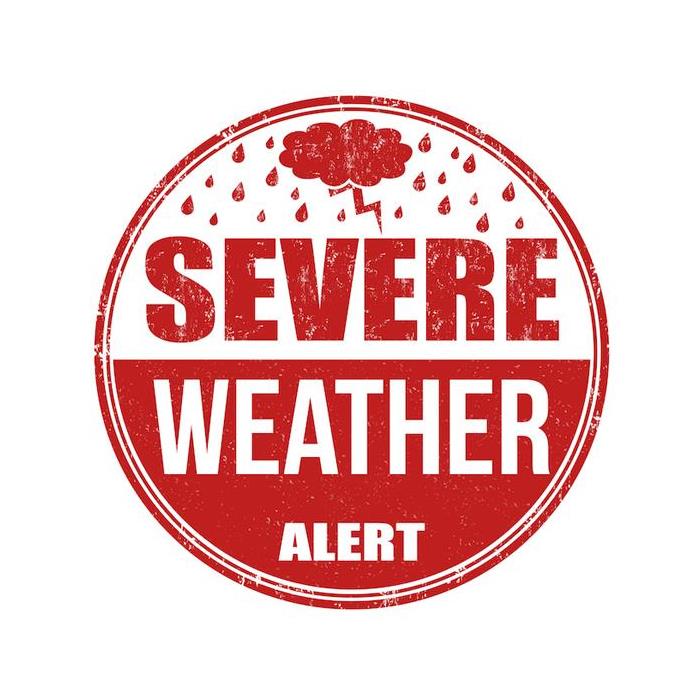 Stormy Weather
Stormy Weather
When severe weather rolls into town, it necessitates some type of warning to protect the public and give everyone time to head for shelter. In fact, there are at least 42 different kinds of weather alerts for the different kinds of storm risks that could happen in the United States. All of those warnings and alerts can be confusing if you don’t know what you are looking for!
When a warning or alert is issued in Tallahassee, you should know what it means and how it will affect you. You can also have the advantage to prep your home ahead of time if you know what kind of weather you are expecting.
While it can be helpful to have a broad knowledge of all of the different kinds of weather alerts, it is really essential to have a working understanding of the specific alerts that affect us here in northwestern Florida.
How Alerts Are IssuedDo you know how weather alerts are issued to begin with? Weather forecasting is a collaboration of many different data points and research to create the best prediction possible. The severity, location and length of storms are all important details, so a lot of work goes into each forecast and potential alert.
The National Weather Service is the organization in charge of forecasting for the entire country. In order to keep communication more localized, the NWS is broken down into six regional offices around the nation to issue specific warnings for each area, along with hundreds of local offices. Here in Tallahassee, we are covered by the Southern Region headquarters located in Fort Worth, Texas.
Meteorologists and other staff within the NWS work together by using forecasting data, radar patterns and seismic sensors to create their forecasts. From there, they can get an accurate idea of the severity of any weather and can issue alerts based upon this research.
The Most Important AlertsKnowing the difference between a “watch” and a “warning” is the most fundamental distinction that everyone should understand in order to stay safe. This language is used across the United States in almost all weather alerts.
A watch should prompt you to begin preparing for severe weather because it means that the conditions are right for severe weather to develop. A warning means that danger is imminent and that you should seek shelter immediately. Watches cover a broader area, and warnings are much more location specific.
Here in Tallahassee, it seems like we can get almost all kinds of bad weather. From tropical storms and flooding to tornadoes, we can see it all! Except blizzards, thank goodness. Knowing how to respond to each scenario can help keep you safe.
Protect Your ResidenceIn addition to knowing how to react to alerts, you can also take a couple of important steps to further protect yourself as well as your home.
Clearing your gutters and securing your outdoor furniture are two easy ways to help minimize the risk of structural damage and a leaking roof. Taking the time to add any necessities to your emergency kit and locating your safe sheltering spot are also great ideas.
Once the storm threat has passed, take pictures of any damage your home has suffered, and then call us at SERVPRO of Tallahassee. We are here to answer your call 24⁄7 and will help you with any kind of repairs that you need.
The more you understand about our weather, the safer you can be. Take the extra time to learn about each weather threat and their corresponding alert, and you will be much more prepared for any type of severe weather that comes our way.
Experienced storm damage to your home or property? Contact us today for a quick response!
When severe weather rolls into town, it necessitates some type of warning to protect the public and give everyone time to head for shelter. In fact, there are at least 42 different kinds of weather alerts for the different kinds of storm risks that could happen in the United States. All of those warnings and alerts can be confusing if you don’t know what you are looking for!
When a warning or alert is issued in Tallahassee, you should know what it means and how it will affect you. You can also have the advantage to prep your home ahead of time if you know what kind of weather you are expecting.
While it can be helpful to have a broad knowledge of all of the different kinds of weather alerts, it is really essential to have a working understanding of the specific alerts that affect us here in northwestern Florida.
How Alerts Are IssuedDo you know how weather alerts are issued to begin with? Weather forecasting is a collaboration of many different data points and research to create the best prediction possible. The severity, location and length of storms are all important details, so a lot of work goes into each forecast and potential alert.
The National Weather Service is the organization in charge of forecasting for the entire country. In order to keep communication more localized, the NWS is broken down into six regional offices around the nation to issue specific warnings for each area, along with hundreds of local offices. Here in Tallahassee, we are covered by the Southern Region headquarters located in Fort Worth, Texas.
Meteorologists and other staff within the NWS work together by using forecasting data, radar patterns and seismic sensors to create their forecasts. From there, they can get an accurate idea of the severity of any weather and can issue alerts based upon this research.
The Most Important AlertsKnowing the difference between a “watch” and a “warning” is the most fundamental distinction that everyone should understand in order to stay safe. This language is used across the United States in almost all weather alerts.
A watch should prompt you to begin preparing for severe weather because it means that the conditions are right for severe weather to develop. A warning means that danger is imminent and that you should seek shelter immediately. Watches cover a broader area, and warnings are much more location specific.
Here in Tallahassee, it seems like we can get almost all kinds of bad weather. From tropical storms and flooding to tornadoes, we can see it all! Except blizzards, thank goodness. Knowing how to respond to each scenario can help keep you safe.
Protect Your ResidenceIn addition to knowing how to react to alerts, you can also take a couple of important steps to further protect yourself as well as your home.
Clearing your gutters and securing your outdoor furniture are two easy ways to help minimize the risk of structural damage and a leaking roof. Taking the time to add any necessities to your emergency kit and locating your safe sheltering spot are also great ideas.
Once the storm threat has passed, take pictures of any damage your home has suffered, and then call us at SERVPRO of Tallahassee. We are here to answer your call 24⁄7 and will help you with any kind of repairs that you need.
The more you understand about our weather, the safer you can be. Take the extra time to learn about each weather threat and their corresponding alert, and you will be much more prepared for any type of severe weather that comes our way.
Experienced storm damage to your home or property? Contact us today for a quick response!
Prevent Fires in Your Home Today | SERVPRO® of Tallahassee
6/16/2022 (Permalink)
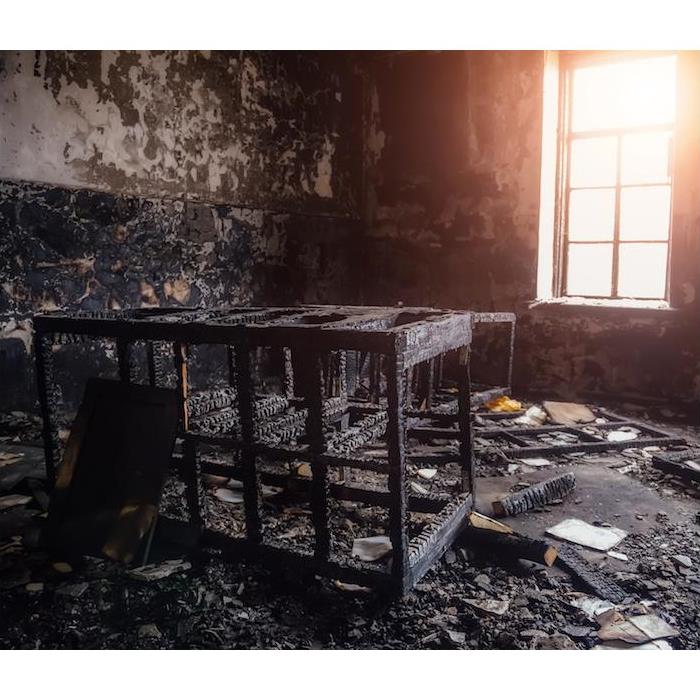 Fire Loss
Fire Loss
At this point in 2022, the American Red Cross has already responded to more than 20,000 house fires. This number only represents a small number of the home fires that have actually occurred so far this year in the United States.
While we know that smoke detectors continue to be the best way to prevent deaths and extensive damage due to fire, there are a few other easy ways to help minimize your risk of causing a house fire.
Clear That ClutterClutter can so easily become an issue in all of our homes, but did you know that the excess clutter in your home can be fuel to a fire? Piles of clothing, excess blankets or that pile of mail or newspapers that you have been meaning to pare down can all become an easy meal for a house fire.
Loose outlets are another common source of fire in the home. If you have recently noticed an outlet that is wiggly when you plug something in to it, call an electrician to come out and tighten it back down.
It is a much better idea to take care of the issue now rather than deal with the aftermath of a house fire later.
Create a Defensible Space With LandscapingYour yard is key in protecting your home from a fire that originates outside. By intentionally planting trees or shrubbery around your home, you can create a buffer between the fire and your house to give your local firemen more time to reach you before it consumes your walls.
Some states like California have actually imposed defensible zone requirements when landscaping due to their proven ability to slow outdoor fires. Even though we don’t live on the West Coast, we can still benefit from planting defensible spaces in Tallahassee.
In fact, the recent brush fire near Cold Harbor Drive proves that even a small spark can start a large problem. Defensible spaces would be helpful in this scenario to help slow an unexpected wildfire and the dangers they pose to your home.
Keep It Safe By Keeping It CleanSpring cleaning doesn’t simply benefit the functionality of your home—it can also help reduce fire risk. Give your stove and chimney a solid cleaning every season, and stay on top of your regular dusting to make sure you are giving your home the best chance to fend off a potential fire.
Our homes are our sanctuaries. They protect us from the elements and give us a sense of safety. It is easy to do these simple tasks regularly to make sure that your home will protect you and your family for years to come.
If you have experienced fire damage or want to learn more about our fire damage restoration services, contact us today. We’re here to act fast, 24⁄7.
Don’t Let Storms Rain on Your Parade
6/1/2022 (Permalink)
Storms can be intimidating and even life-ruining. They can lead to severe lightning strikes, heavy rain, hail and strong winds. There are around 100,000 thunderstorms throughout the United States every year, so thunderstorms roll around fairly frequently throughout the country.
Due to proximity to the coast, Tallahassee often suffers the effects of disturbances coming from the Gulf of Mexico. You never know when a hurricane could build up steam and strike your home or neighborhood. In the event this happens, you want to be prepared for anything.
Here are some of the things you need to think about ahead of time. Preparing for serious storms will help you reduce their negative impact on you and your home.
Your Severe Weather Communication StrategyCommunication with everyone in your household is key when the weather turns bad, as is receiving notifications from authorities. First of all, it’s important to understand the difference between watches and warnings so that you know when to simply remain vigilant and when to seek shelter quickly.
It’s also a smart idea to have multiple ways to receive alerts from authorities, such as your cell phone and an NOAA weather radio.
Lastly, establish your family’s communications strategy. Whenever the weather turns bad, make sure everyone knows where to go in your house (such as the basement or bathroom).
Furthermore, make sure to make a plan for communication in case one or more family members are away when a storm hits—that way everyone knows when and how to check in and mark themselves safe.
Your Severe Weather Emergency KitIn your storm shelter area at home, you should have an emergency kit that contains all the essentials your family needs for at least three days of sheltering. Make sure your kit includes nonperishable food, water, flashlights and batteries, as well as anything else you might need to stay safe and comfortable during the storm.
Your Severe Weather Aftermath ChecklistOnce the storm is gone, start the next step of evaluating your safety plan and addressing any damage to your home. You should go ahead and do a run-through of your property, looking for damage. Pay close attention to vulnerable areas of your home, such as your roof and window and door seals.
If there’s damage, you know what to do next. You can reach an expert at SERVPRO of Tallahassee at any time, day or night. We will get to work restoring your home as soon as we get on scene.
As soon as you can get your family gathered, make sure you do a safety audit. If you can improve your communications, emergency kit and any other aspects, you will be even better prepared to deal with severe weather the next time it occurs.
If you discover storm damage to your home or business, you can count on SERVPRO to handle the restoration. We’re here 24⁄7 to spring into action—get in touch with us today.
The Types of Flooding to Watch Out For | SERVPRO® of Tallahassee
4/18/2022 (Permalink)
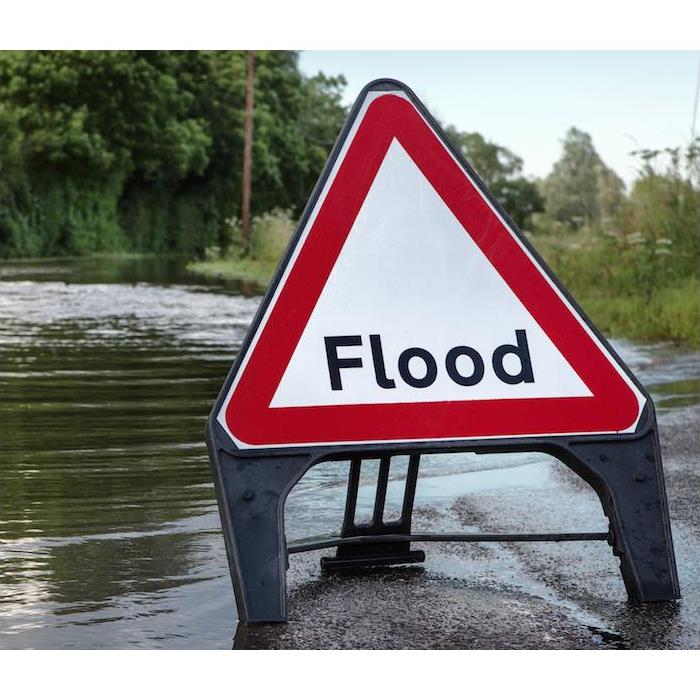 Don't risk a flooded road.
Don't risk a flooded road.
The most common natural disaster in the world is flooding, and it claims more lives in the United States per year than hurricanes, tornadoes or lightning. It can affect everything from individual homes where property collects excess water to wide swaths of communities and cities.
Flooding affects all 50 states and every U.S. territory, but there are similarities in types and causality among all them. There are three common types of flooding, and they happen for four typical reasons.
3 Types of Natural FloodingFlash floods are common, and they happen when heavy rain passes or sits over an area and overwhelms the ability of the ground to contain the moisture. Excess water runs off and takes garbage cans, cars and more with it.
River floods are exactly what they sound like. When there’s too much water for a river’s banks to hold, the water spills over the sides and causes destruction.
Coastal floods happen in areas next to large bodies of water, when storm surges or cyclonic activity causes ocean or gulf levels to rise to flood levels.
The 4 Most Common Causes of Natural FloodingHeavy rainfall. Storms with excessive rainfall, or storms that sit and rest over an area for an extended period, can cause flash floods or river flooding. Urban areas are more at risk for rain floods, because the higher percentage of concrete and asphalt means there’s a lack of soil to soak up all that water. Heavy rainfall hit Tallahassee in November 2021, leading to extensive flooding in homes.
Oceanic activity. Storm surges, hurricanes and rising tides can cause water levels to rise in waves, which can invade coastal communities and wreak havoc.
Dams and levees failing. The most notable example of this in recent history would be the disastrous levee breaks during 2005’s Hurricane Katrina. Levees and dams fail when cracks occur or excess pressure overtakes the dam’s ability to contain the surge of water behind it.
Snowmelts and ice dams. In areas of the country where heavy snow and prolonged freezing temperatures are common, snow and ice can build up over a winter’s time, and when they start to melt, they cause rivers of water to flow through area communities. Ice dams or ice jams happen when rivers become blocked by built-up ice being carried downstream, causing the banks to overflow.
Regardless of the cause of the flooding, SERVPRO has the tools and teams to help your home or business recover from its disastrous effects. Contact us anytime when flooding or water damage makes a mess in your life.



 24/7 Emergency Service
24/7 Emergency Service








